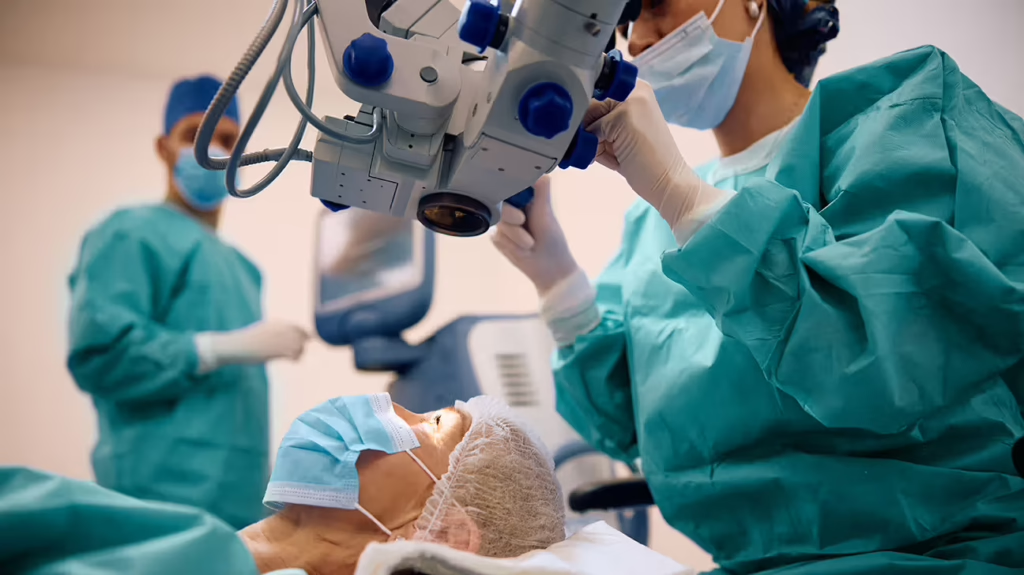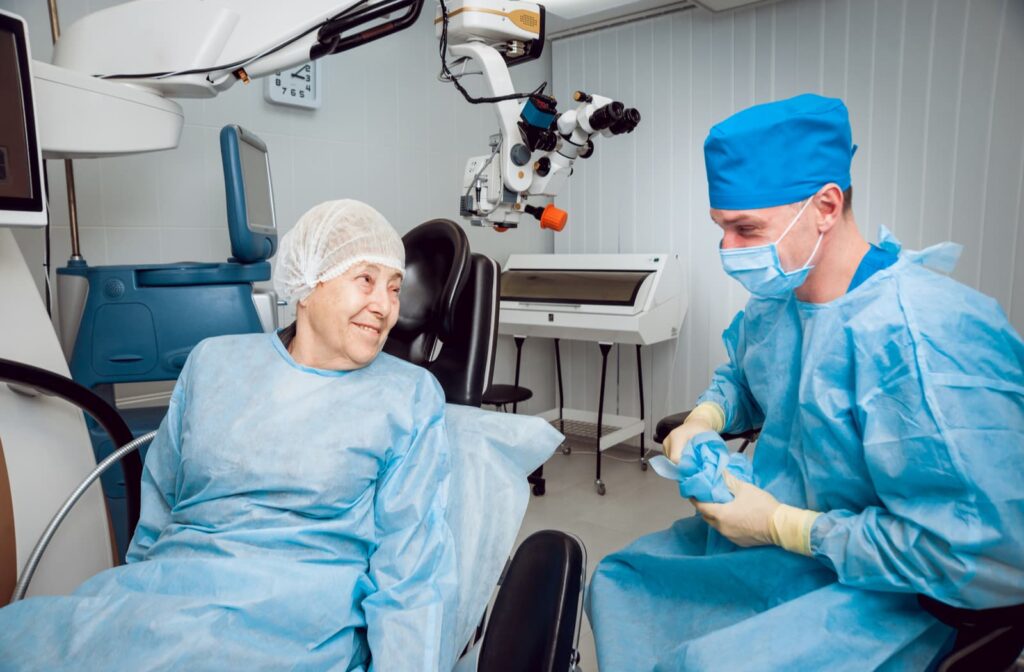Cataract eye surgery is a common procedure that helps restore vision in individuals suffering from cataracts. In this article, we will delve into the details of cataract eye surgery, including what it entails, the different types of surgeries available, and the risks and complications involved. By gaining a better understanding of cataract eye surgery, you will be able to make informed decisions about your eye health.
What is Cataract Eye Surgery?
Cataract eye surgery is a crucial medical procedure that aims to restore clear vision to individuals whose eyesight has been compromised by cataracts. Cataracts are a common age-related condition that affects millions of people worldwide. They can also be caused by certain medical conditions, such as diabetes, or by trauma to the eye. The clouding of the eye’s lens due to cataracts can lead to a gradual decline in vision, impacting daily activities and quality of life.
During cataract eye surgery, the clouded natural lens of the eye is carefully removed and replaced with an artificial intraocular lens (IOL). This IOL helps to restore clear vision by focusing light onto the retina, allowing for improved visual acuity. The surgery is typically performed on an outpatient basis and has a high success rate in improving vision and quality of life for patients.
Defining Cataracts
Cataracts are formed when the proteins in the eye’s lens clump together, causing opacity and hindering the passage of light. This clouding of the lens can result in symptoms such as blurry vision, difficulty seeing in low light conditions, sensitivity to glare, and reduced color perception. It is essential for individuals experiencing these symptoms to consult with an eye care professional for a comprehensive eye examination to determine the presence of cataracts.

The Role of the Eye’s Lens
The lens of the eye is a vital component in the visual system, responsible for focusing light onto the retina. When cataracts develop and cloud the lens, it disrupts this process, leading to visual impairment. The gradual progression of cataracts can significantly impact daily activities, such as reading, driving, or recognizing faces, prompting the need for surgical intervention to restore clear vision.
How Cataracts Affect Vision
As cataracts advance, individuals may notice a decline in visual acuity and quality. Blurry vision, halos around lights, difficulty reading, and problems with night vision are common symptoms experienced by those with cataracts. The impact of cataracts on vision can vary from person to person, highlighting the importance of early detection and timely treatment to prevent further deterioration of eyesight.
The Cataract Surgery Procedure
Before undergoing cataract eye surgery, several preparatory steps are necessary to ensure a successful outcome. These include a comprehensive eye examination to determine the severity of the cataracts and the overall health of the eye.
Pre-Surgery Preparations
Prior to surgery, your ophthalmologist may provide instructions on medication usage, fasting requirements, and any necessary adjustments to your current healthcare regimen. Additionally, they may perform additional tests, such as biometry, to determine the appropriate intraocular lens (IOL) power to be used during the surgery. Read more about biometry at https://www.ncbi.nlm.nih.gov/books/NBK580549/
During the pre-surgery preparations, your ophthalmologist will take the time to address any concerns or questions you may have. They understand that undergoing surgery can be a daunting experience, and they want to ensure that you feel comfortable and well-informed. They will explain the entire process in detail, including the risks and benefits of the surgery, so that you can make an informed decision.
Furthermore, your ophthalmologist will thoroughly review your medical history to identify any potential complications or factors that could affect the surgery. This comprehensive approach is crucial to ensure the best possible outcome and minimize any risks associated with the procedure.
During the Surgery
Cataract surgery typically takes about 15-30 minutes to complete and is usually an outpatient procedure. Before the surgery begins, you will be given local anesthesia to numb the eye. Your surgeon will then make a small incision in the cornea, through which they will insert a tiny instrument to break up and remove the clouded lens. After removing the cataract, the surgeon will place an artificial IOL in its place to restore clear vision.
During the surgery, your ophthalmologist and the surgical team will closely monitor your vital signs and ensure your comfort and safety. They will use state-of-the-art equipment and techniques to perform the procedure with precision and care. The surgical environment will be sterile, and the team will follow strict protocols to minimize the risk of infection.
Moreover, your ophthalmologist will tailor the surgery to your specific needs. They will take into account factors such as your lifestyle, visual goals, and any existing eye conditions to determine the most suitable type of IOL for you. This personalized approach ensures that you achieve the best possible visual outcome and enhances your overall satisfaction with the surgery.
Post-Surgery Recovery
Following cataract surgery, the eye will be covered with a protective shield or bandage, and you may be prescribed topical medications to prevent infection and aid in healing. It is crucial to follow your surgeon’s instructions regarding post-operative care, such as avoiding strenuous activities, not rubbing the eye, and attending follow-up appointments. Most patients experience improved vision within a few days, with complete recovery taking several weeks. To learn more about infection click here.
During the post-surgery recovery period, your ophthalmologist will closely monitor your progress to ensure that your eye is healing properly. They will provide you with detailed instructions on how to care for your eye at home, including how to administer any prescribed medications. They will also be available to address any concerns or questions you may have during this crucial stage of your recovery.
Furthermore, your ophthalmologist will schedule regular follow-up appointments to assess your vision and overall eye health. These appointments are essential to monitor the long-term success of the surgery and address any potential complications that may arise. Your ophthalmologist’s commitment to your post-operative care demonstrates their dedication to your well-being and ensures that you achieve the best possible outcome from your cataract surgery.
Types of Cataract Surgeries
There are different surgical techniques available for cataract removal, and the choice of procedure depends on various factors like the severity of the cataract and the individual’s overall eye health.
When considering cataract surgery, it’s essential to understand the nuances of each technique to make an informed decision that suits your specific needs and preferences. Your ophthalmologist will assess your eye condition thoroughly and recommend the most suitable approach for optimal outcomes.
Phacoemulsification
Phacoemulsification is the most commonly performed cataract surgery technique. It involves using ultrasound energy to break up the cataract into small pieces, which are then suctioned out of the eye through a tiny incision. Phacoemulsification offers a shorter recovery time and less discomfort compared to other methods.
During the phacoemulsification procedure, the surgeon inserts a small probe into the eye that emits ultrasound waves to emulsify the cloudy lens. This process allows for precise removal of the cataract while minimizing trauma to the surrounding eye structures, leading to quicker healing and improved visual outcomes.

Extracapsular Cataract Surgery
Extracapsular cataract surgery is typically used when the cataract is more advanced and requires a larger incision. In this procedure, the surgeon removes the lens in one piece and leaves the back portion of the lens capsule intact. An artificial IOL is then implanted in front of the lens capsule to restore vision.
While extracapsular cataract surgery is less commonly performed today due to advancements in phacoemulsification, it remains a viable option for individuals with specific eye health considerations. Your surgeon will discuss the benefits and potential risks associated with this technique to help you make an informed choice regarding your cataract treatment.
Intracapsular Cataract Surgery
Intracapsular cataract surgery involves removing the entire lens, including the lens capsule. This technique is rarely used today due to the increased risk of complications and the availability of safer alternatives.
Historically, intracapsular cataract surgery was the standard approach for cataract removal before the advent of modern phacoemulsification techniques. While it is now considered outdated, it paved the way for innovative surgical methods that prioritize patient safety, comfort, and visual outcomes. Your eye care provider will explore contemporary options with you to ensure the best possible results for your cataract surgery.
Risks and Complications of Cataract Surgery
While cataract surgery is generally safe and effective, as with any surgical procedure, there are risks and potential complications to be aware of. It is important to have a comprehensive understanding of these risks in order to make informed decisions about your eye health.
Common Risks
Common risks associated with cataract surgery include infection, bleeding, swelling, increased intraocular pressure, and corneal decompensation. Although these risks are relatively rare, it is crucial to minimize them through proper pre-operative evaluation and post-operative care. Your ophthalmologist will thoroughly assess your eye health and overall medical condition to ensure that you are a suitable candidate for surgery.
Potential Complications
Although rare, potential complications of cataract surgery include retinal detachment, endophthalmitis (a severe eye infection), and posterior capsule opacification (clouding of the lens capsule). These complications can have a significant impact on your vision and may require additional treatment. Your surgeon will discuss these risks with you and take appropriate measures to mitigate them, such as using advanced surgical techniques and prescribing preventive medications.
How to Minimize Risks
There are several steps you can take to minimize the risks associated with cataract surgery. First and foremost, it is crucial to choose a skilled and experienced surgeon who specializes in cataract surgery. A highly trained surgeon will have the expertise to handle any potential complications that may arise during the procedure.
In addition, carefully following pre-operative and post-operative instructions is essential. These instructions may include avoiding certain medications, fasting before the surgery, and using prescribed eye drops to prevent infection and inflammation. Attending all follow-up appointments is also important, as it allows your surgeon to monitor your progress and address any concerns.
Furthermore, promptly reporting any concerning symptoms to your healthcare team is vital. If you experience sudden pain, vision changes, or any other unusual symptoms after cataract surgery, it is important to seek immediate medical attention. Early detection and intervention can help prevent serious complications and ensure the best possible outcome.
In conclusion, cataract eye surgery is a safe and effective procedure that can dramatically improve vision in individuals with cataracts. Understanding the different surgical techniques, risks, and complications associated with cataract surgery will help you make informed decisions about your eye health and ensure the best possible outcome. If you suspect you have cataracts or are experiencing changes in your vision, consult with an ophthalmologist to discuss your options and determine the most appropriate course of treatment.
Other resources: Cataract Surgery Sydney Choosing the Best Clinic for Your Needs
